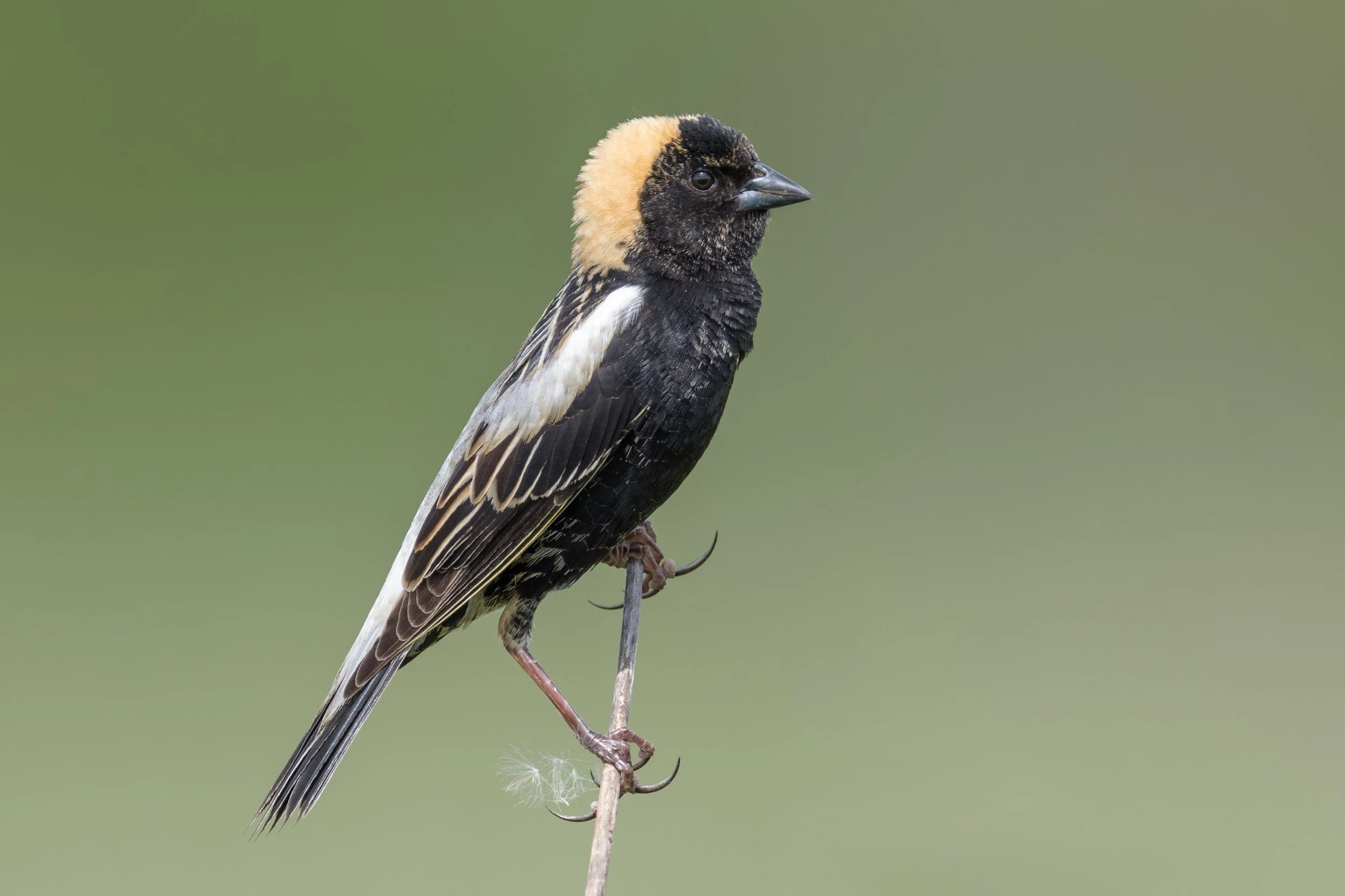Photo: Bobolink, Adam Brandemihl/Audubon Photography Awards
By Greg Butcher
The 2022 State of the Birds report gives us concern but also provides some basis for hope for the future. I started birdwatching in 1963 and I got my first job in bird conservation in 1984. Like many of you, I celebrated the first Earth Day in 1970. So I felt a bit of personal failure three years ago when an article in Science revealed that North America has lost 3 billion birds – 25% of the total – since 1970. The 2022 State of the Birds Report released last month revisits the sad tale, provides a bit more detail, and tries to reverse my (our?) sense of despair that birds continue to decline despite our efforts to help them.
North American State of the Birds reports (SOTB) began in 2004 and have been produced by the North American Bird Conservation Initiative (NABCI) since 2009. The U.S. NABCI Committee is a coalition of state and federal government agencies, private organizations, and bird initiatives in the United States working to ensure the long-term health of North America’s native bird populations. The 2022 report summarizes population trends over the past 50 years by habitat type and by groups of related bird species. In addition, SOTB highlights successful conservation actions and recommends priorities for future work.
SOTB 2022 reiterates that we have lost 25% of North American birds in the last 50 years. The emphasis in this year’s report is on 90 species that have lost half of their population in those 50 years, of which 70 are expected to lose another 50% in the next 50 years.
The report is not completely negative because wetland birds have increased over the same time span. Geese have increased exponentially, and most duck species are doing better now than they were 50 years ago. Why? Geese have discovered waste agricultural grain and greatly increased their overwinter survival. Ducks and other waterbirds have benefitted from relatively wet years in the Prairie Potholes of the Dakotas and Manitoba, the duck breeding capital of North America.
The good news of SOTB 2022 is that a major reason that wetland birds have done better than other species is because we have invested heavily in wetlands conservation since the passage of the North American Wetlands Conservation Act in 1985. We haven’t achieved “no net loss” of wetlands, but we have slowed their decline, saved the best, and improved many. To reverse declines in other bird groups, we will need to invest in conservation of grasslands, forests, aridlands, and other habitats at least to the extent we have for wetlands.
Bobolink, Adam Brandemihl/Audubon Photography Awards
Eastern Meadowlark, TiTi McNeill/Audubon Photography Awards
Unfortunately, birds are declining in all other major habitats. Grassland birds are doing particularly poorly, as evidenced here in northern Virginia, where bobwhite quail have disappeared. American Kestrels have become a rare wintering bird, and Bobolinks are a rare migrant. Eastern Meadowlarks and Grasshopper Sparrows are the last breeding species in northern Virginia’s grasslands and meadows. It is easy to see why - large meadows with native plant species have been declining throughout my lifetime.
Shorebirds (sandpipers and plovers) are also doing poorly, left vulnerable by their long-distance migrations. The tundra and boreal habitats where they spend the North American summer are reeling from the effects of climate change. Aridland birds in western sagebrush and southwestern desert habitats are also suffering, primarily from drought, heat, and habitat degradation.
Sea ducks show steep declines, but I suspect that at least some of that may reflect birds that winter farther north where there are no Christmas Bird Counts to report them.
Eastern forest birds are also showing declines, as evidenced by the increasing rarity of our beloved Wood Thrush. Local favorites Kentucky and Prothonotary Warblers are also in decline.
Many efforts are being made to reverse these declines. Over the past 35 years, joint ventures among federal agencies, state governments, and the private sector to conserve bird habitats have sprouted up across the United States, Canada, and northern Mexico. In northern Virginia, we are located within the Atlantic Coast Joint Venture. SOTB 2022 reports on many conservation successes of these joint ventures.
SOTB 2022 recommends the following steps for successful bird conservation: 1) identify causes of population declines and suggest key actions to reverse them, 2) work with local communities on solutions, 3) develop an action plan that supports birds throughout the year and wherever they migrate, 4) take action, and 5) achieve success.
Audubon Society of Northern Virginia is implementing the strategy recommended by SOTB. We call our initiative “Stretch Our Parks” to improve the impact all the northern Virginia natural parks have on bird populations by improving habitat in the parks and in the neighborhoods that surround the parks.
So, every once in a while I am tempted to despair, but SOTB 2022 and ASNV strategic planning point the way to effective actions we can take to halt bird population declines – and in many cases to reverse them. SOTB 2022 helps us think globally; ASNV is here to help you act locally. Please join us this year as we work to improve habitats both in and around the many beautiful parks in northern Virginia!



